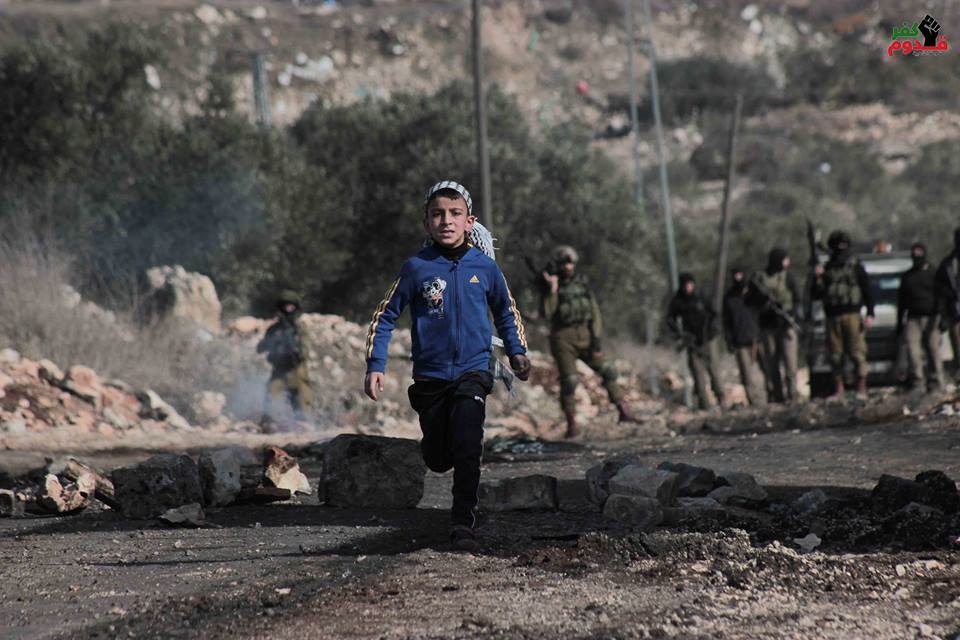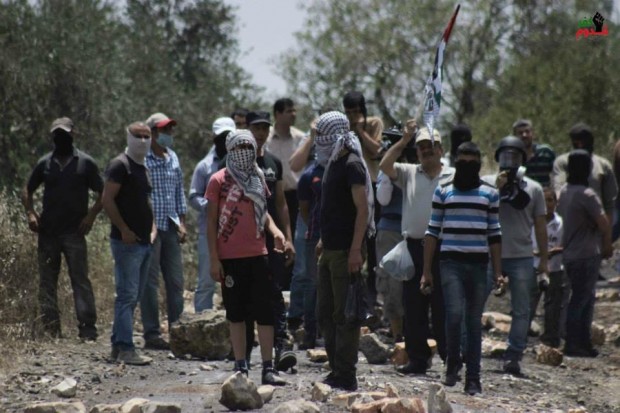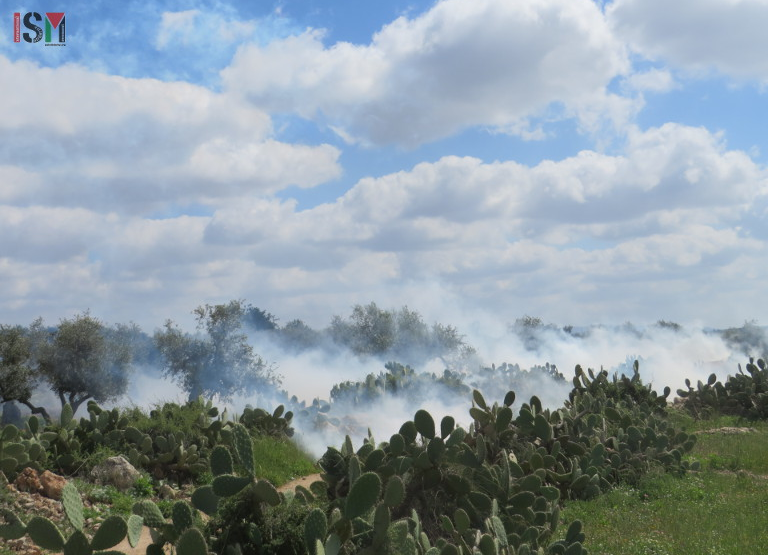Tag: Friday Demonstrations
-
7 year old boy targeted in Kafr Qaddum
23th December 2016 | Popular Resistance Committee of Kafr Qaddum | occupied Palestine Today, Friday December 23rd, 2016, the village started its march as usual toward the blocked road. Suddenly 12 soldiers from a special unit of the Israeli occupation force surprised them in an ambush, and attacked and arrested a 7 year old Palestinian child.…
-
Israeli forces use live ammunition in Kafr Qaddum on the first Friday of Ramadhan
21st June 2015 | International Solidarity Movement, Al Khalil Team | Kafr Qaddum, Occupied Palestine On the 19th of June in Kafr Qaddum, the first Friday demonstration of Ramadhan, Israeli border police shot two Palestinians with live ammunition. One Palestinian was shot twice in the leg and the other was shot once in the leg.…
-
Ni’lin demonstrators met with senseless violence
23th March 2015 | International Solidarity Movement, Ramallah Team | Ni’lin, Occupied Palestine On the 20th of March, during Ni’lin’s weekly Friday demonstration, Israeli occupation forces attacked protestors with about 20 rounds of tear gas canisters shot with the ‘venom’ tear gas launcher mounted on a military jeep (which can launch up to thirty rounds of tear gas…



